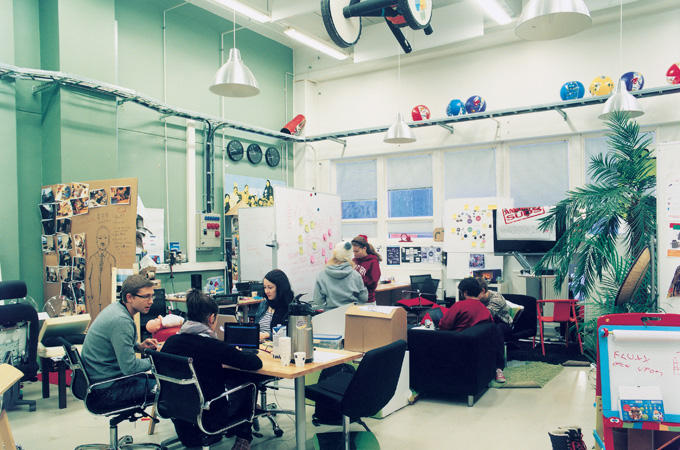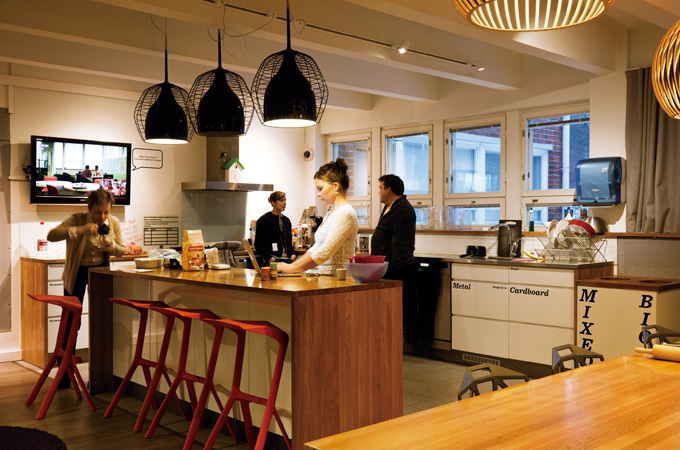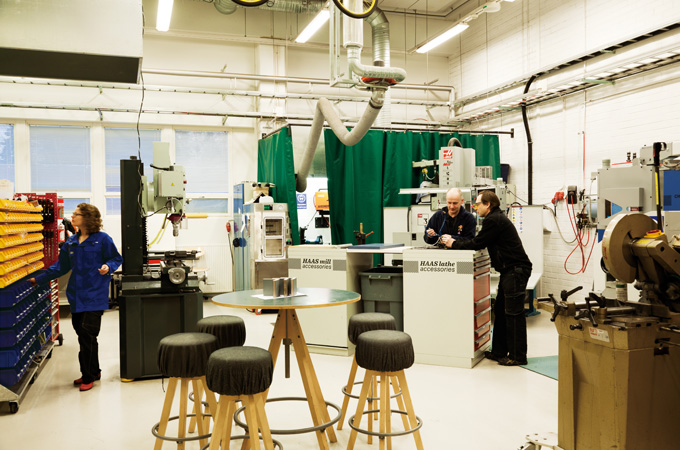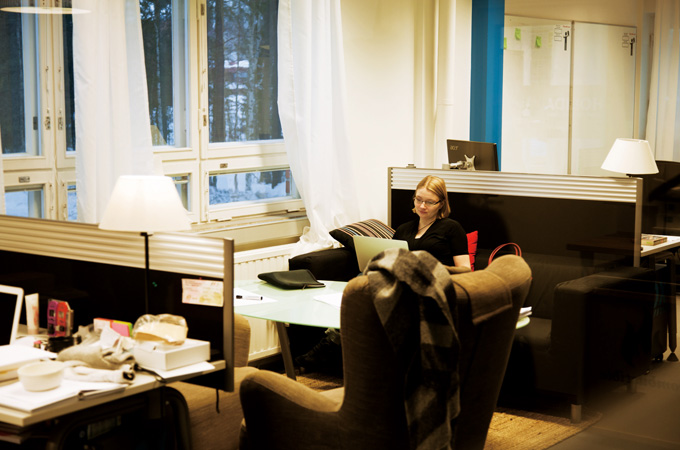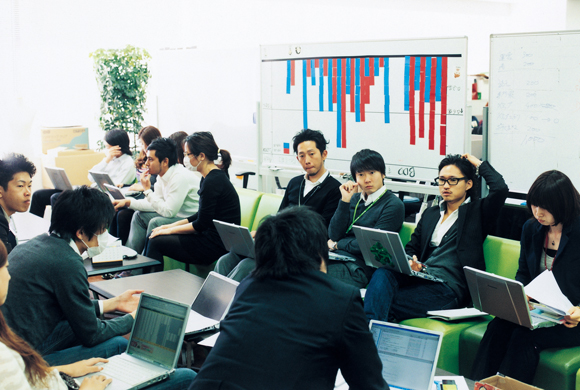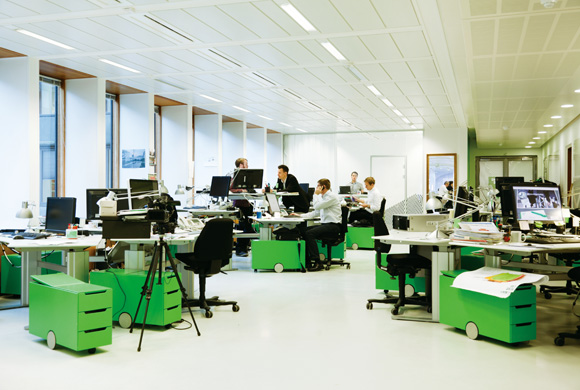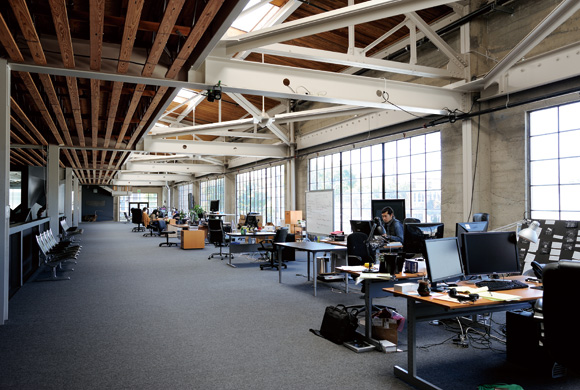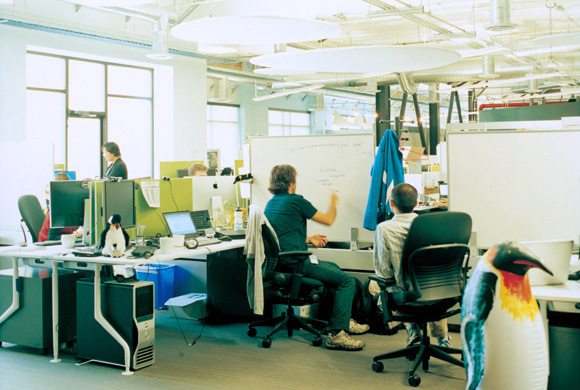Workplace
Aug. 7, 2017
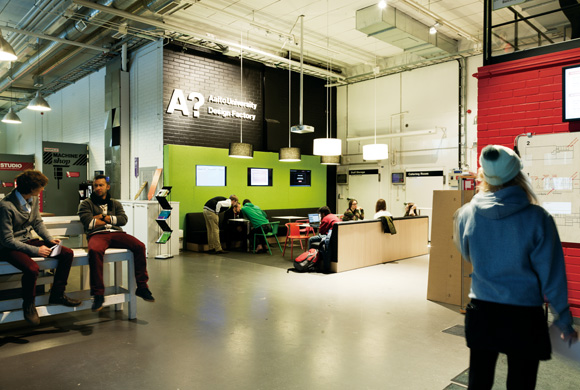
An Innovation Platform, Bringing Breakthroughs
to Corporations and Society
A Small Start Leading to a Chain of Innovation
[Aalto Design Factory] Espoo, Finland
In a space surrounded by prototypes, creativity is stimulated Creating design to astonish the world. On the campus are passionate students and the prototypes they have created.
Finland is a small country, but one whose corporations are global leaders in innovation; its Aalto University was created to help handle the national issues facing the country. It was founded in 2010, through the merger of the Helsinki University of Technology, the Helsinki School of Economics and the University of Art and Design Helsinki, with funding from the government, business and the university itself.
Within it is the Aalto Design Factory(ADF; established in 2008, it actually predates the founding of the university), focused on the training of product designers for a global market. It is a design research institution, but its mission is also as a practical center contracted by corporations to take on and resolve specific cases while also educating students.
Aalto University’s core function is open innovation, provided through its Media Factory, focusing on video and the Web; the Service Factory, aimed at the service industry; the Venture Garage, assisting with startups; and AppCampus, assisting with the construction of platforms for specific corporations.
“Our goal is to create a collaborative platform for the instruction, research and use of product design,” says instructor and “The Chief” Kalevi “Eetu” Ekman.
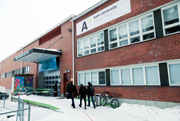 The atmosphere of the factory itself is present in the lecture rooms and other spaces within the building.
The atmosphere of the factory itself is present in the lecture rooms and other spaces within the building.
Founded: 2008
Enrollment: Approximately 500(in 2012)
Employees: 20 faculty, 31 staff
http://designfactory.aalto.fi
http://designfactory.aalto.fi/
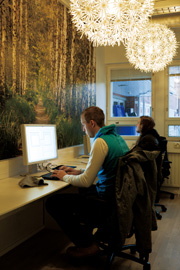 Computer Room: Often the students work in pairs, so there are several rooms for two people. Specialist softwares are installed in the computers.
Computer Room: Often the students work in pairs, so there are several rooms for two people. Specialist softwares are installed in the computers.
One signature course, the Product Development Project Course (PDP), was first begun at Helsinki University of Technology in 1980. Physical facilities – buildings, workrooms, equipment and technology – have always been as important as psychology aspects – work methods, work space, work style and methodology.
When the new university was created, it was also redesigned as a place for research. To have the platform for the people gathered here to challenge new things, it’s important that we provide them with an open space that can be flexibly used,” says Esa Santamäki, Chief of Spatial Design.
There are several work areas fully equipped with a range of work tools and machinery. Students of the three Factories, the Venture Garage and App Campus, as well as partner company employees, external researchers entrepreneurs and students of other universities can also freely enter and make use of the space.
The partner companies involved in the joint product development activities are not only Finnish, but also firms from Japan, Sweden, the Netherlands, Germany, Estonia and various other countries.
The projects are all actual tasks brought in by the corporations—many of them seen as almost unsolvable. The students, however, bring excellent problem-solving abilities to bear, and the corporations often are quite astonished by the results. “They bring proposals from a completely different viewpoint, giving the companies the opportunity to rethink their ideas or change their attitude toward them,” Mr. Ekman says.
Products which have actually been created through this process include the PowerKiss, a wireless recharging station for mobile phones; CatchBox, a throwable wireless microphone system; and more than 20 other products. What companies are looking for is this kind of thinking that begins with new ideas—or, perhaps better said, is free from fixed ideas.
From WORKSIGHT 04(June, 2013)
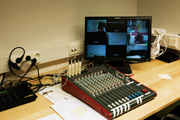 Big Sister: A room with eight cameras mounted on the ceiling, used for the observation of consumer behavior. The photo shows the control unit.
Big Sister: A room with eight cameras mounted on the ceiling, used for the observation of consumer behavior. The photo shows the control unit.
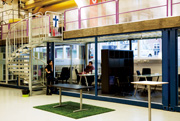 Rental spaces within the building are divided into booths, which are occupied by a number of startup companies.
Rental spaces within the building are divided into booths, which are occupied by a number of startup companies.
http://startupsauna.com/
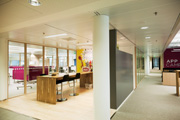 A collaboration created though the joint investment by Microsoft, Nokia and Aalto University.
A collaboration created though the joint investment by Microsoft, Nokia and Aalto University.
https://ace.aalto.fi/appcampus/


